Staten Island Ferry
One of the most popular, well-known and touristic ferryservices in the world is certainly the Staten Island Ferry, that runs a service between Battery Park in New York City and the town of St. George at Staten Island. During the 25 minute sailings, passengers can enjoy great views of the skyline of New York, the Statue of Liberty and Ellis Island. And all of this is free. Of course it is not only a touristic route, because it is the fastest way for commuters from Staten Island to the city of New York. Everyday, around 75.000 passengers are transported on 104 trips sailing 24 hours a day. The largest ferries on the route can now sail with up to 6000 passengers and this is the largest number of passengers any ship in the world can carry in normal service.
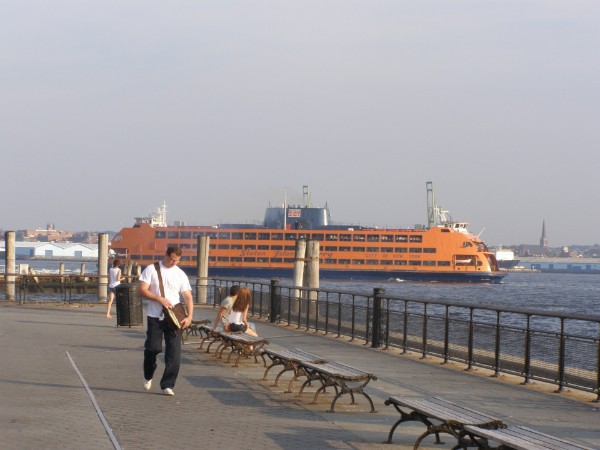
The Samuel I. Newhouse as seen from the BatteryPark boardwalk at the 2nd of september 2010.
Sailings between New York and Staten Island were already offered by local boatsmen sailing with small, two-masted sailingboats from the 18th century onwards. But in 1817, the Richmond Turnpike Company started a motorized and official service with the steamboat Nautilus. Captain of this first Staten Island Ferry was John De Forest, the brother-in-law of a man named Cornelius Vanderbilt, one of the most wealthiest men of one of the most wealthiest families in the history of the United States. Nice to know is that this family originally came from The Netherlands, they used to be farmers in a small town named De Bilt. This is also where their familyname comes from, they are 'From De Bilt', or in Dutch 'Van De Bilt'. Cornelius Vanderbilt eventually bought the ferryservice of the Richmond Turnpike Company in 1838 after he had made his fortunes in the steamboat business. He remained the owner untill the early 1860's when the American civil war broke out and he sold the service to the Staten Island Railway company, that was owned by his brother Jacob Vanderbilt.
On july 30th 1871, a boiler exploded aboard the ferry Westfield while the ship was loading passengers at the South Ferry terminal. Around 90 people died in the accident and hundreds more were injured and in the aftermath, Jacob Vanderbilt was arrested for murder, but he was never convicted. The engineer of the ship was a black man and this had caused racist commentary in the New York newspapers, but Jacob Vanderbilt always defended his engineer. In 1884, Vanderbilt had bought all competing services and sold them to the Baltimore and Ohio Railroad, and the ships were from then on operated by the Staten Island Rapid Transit, SIRT. This was short lived, because in the aftermath of a new disaster, on the 14th of june 1901, the City Of New York seized control of the ferries of the company under the management of the Department of Docks and Ferries. Five new ships were commissioned, all named after the city's boroughs, where Staten Island just had become one of. In the accident that had happened, five people were drowned when the ferry Northfield had been in a collission with a Jersey Central ferry.
John F. Knnedy sailing past Governours Island at the 5th of september 2010.
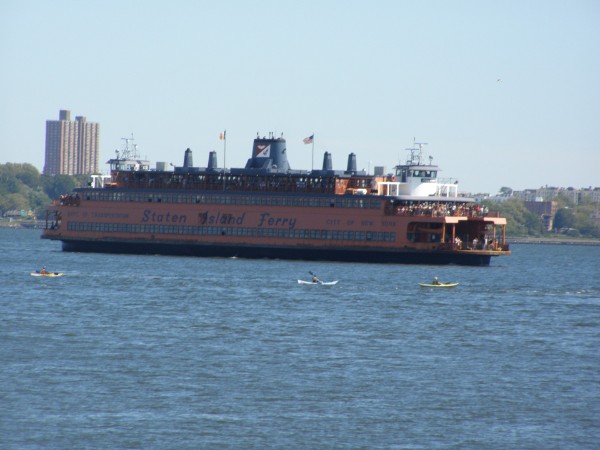
Under the management of the City Of New York, there were no major accidents anymore for a long time. On the 15th of october 2003, in a heavy collission involving the Andrew J. Barberi eleven people died. The ferry collided with the pier at St. George and a large hole in her side was the material damage. The ferry was rebuilt, though. Since the terrorist attacks in New York and Washington in september 2001, cars were banned from the ferries, and the cardecks were rebuilt as passengerdecks. Another remarkable precaution measure was taken after these attacks. Now, when a large passengerliner like Queen Mary 2 enters port, the ferries are escorted by harbourpolice armed with large machineguns. The ferries are free and easy to board without safety measures, so they regard it as a possible threat for other ships. I was able to see this in action while I was in New York and I must say it is a chilling sight.
Below, a picture of the coastguard boat with heavily armed harbourpolice aboard escorting the Staten Island Ferry to the Whitehall terminal in New York.
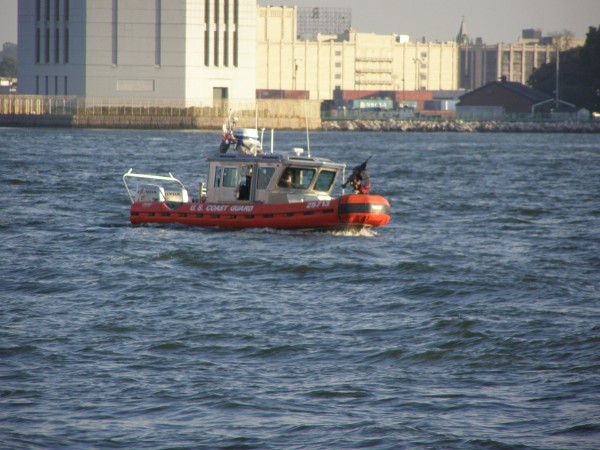
In february 2005, a large and new terminal was opened in New York, with easy access to bikepaths, the subway and bus services. The terminal is extremely modern and was designed for the use of 100.000 people a day. In front of the terminal, a new plaza was opened under the name of Peter Minuit Plaza.
John F. Kennedy (below) is the oldest ferry now sailing the route. The ship was built in 1965, so she almost celebrates her fiftieth birthday. The ferry was the namegiver of a class of three ships, dubbed the Kennedy-class. The other two sisterships of the John F. Kennedy-class are no longer in service. These ships are 91 meters long, 21,3 meters wide, their draft is 4,1 meters and they are measured at 2109 tons. Some 3500 passengers can be ferried at a speed of 16 knots. Untill 2001, the Kennedy-class of ships could take aboard 40 cars also.
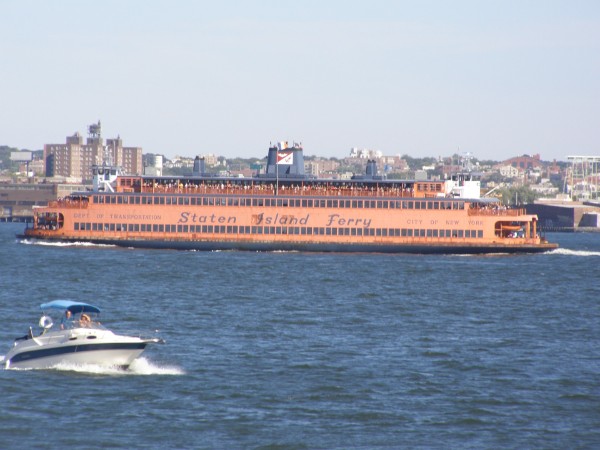
The Samuel I. Newhouse, seen below, was built in 1982. The ship is designed for 6000 passengers and she never carried cars. She is part of a class of two ships, the other one being the Andrew J. Barberi. These ships measure 3335 tons and they have a lenght of 94 meters, a with of 21,3 meters and a daft of 4,1 meters. They also sail at 16 knots.
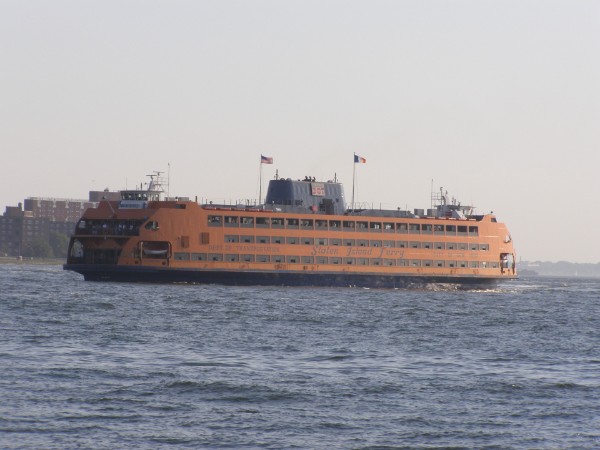
Below there are two ships shown of the Molinari-class, the newest ships on the route. These ships started sailing in 2005 and 2006 and are built to the design and ambiance of the classic New York ferryboats. These ships can ferry 4500 passengers and were originally designed for the carriage of 40 cars also. The first ship of the class is the Guy V. Molinari, shown on the first picture below. On the second picture is the Spirit Of America, the thirth ship of the class that entered service. The last ship of the class is the Senator John J Marchi, that was built in between these two ships. It was meant for the Spirit Of America to start her services at the 25th of october 2005, to celebrate the 100th anniversary of the take-over of the service by the City Of New York from the B&O Railroad. Due to mechanical problems with the ships of this class, the Spirit Of America had her maiden voyage delayed to april 4th, 2006. The hull of the ship has been built with steel that came from the towers of the WTC, that is the reason why the ship was named Spirit Of America.
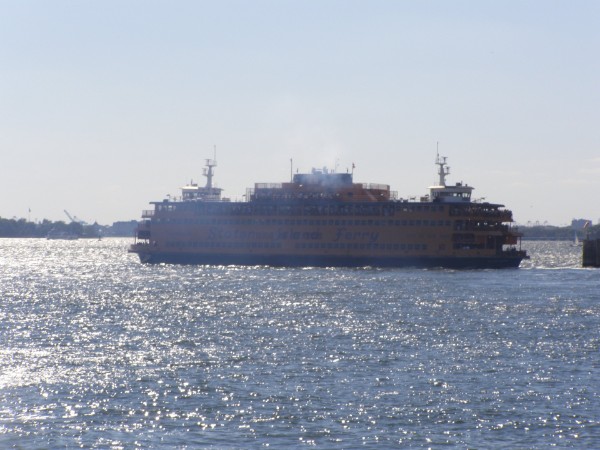
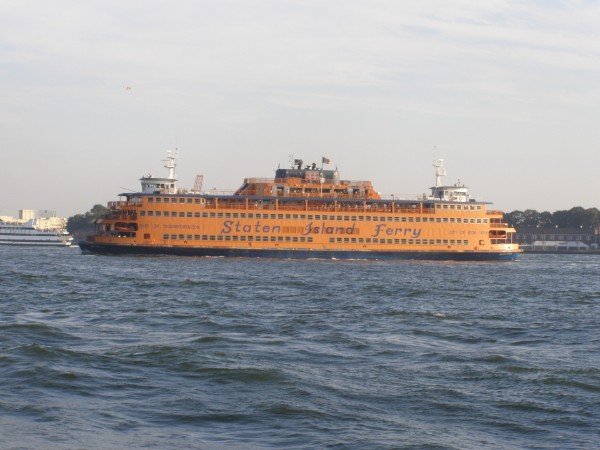
Sadly, I did not had the possibility of taking pictures of ships of the fourth remaining class of ships of the service, the Austen-class from 1986. In this class, two ships were built. They are smaller then the others, often referred to as 'the little boats' or 'mini Barberi's', sailing with 'only' 1280 passengers.

